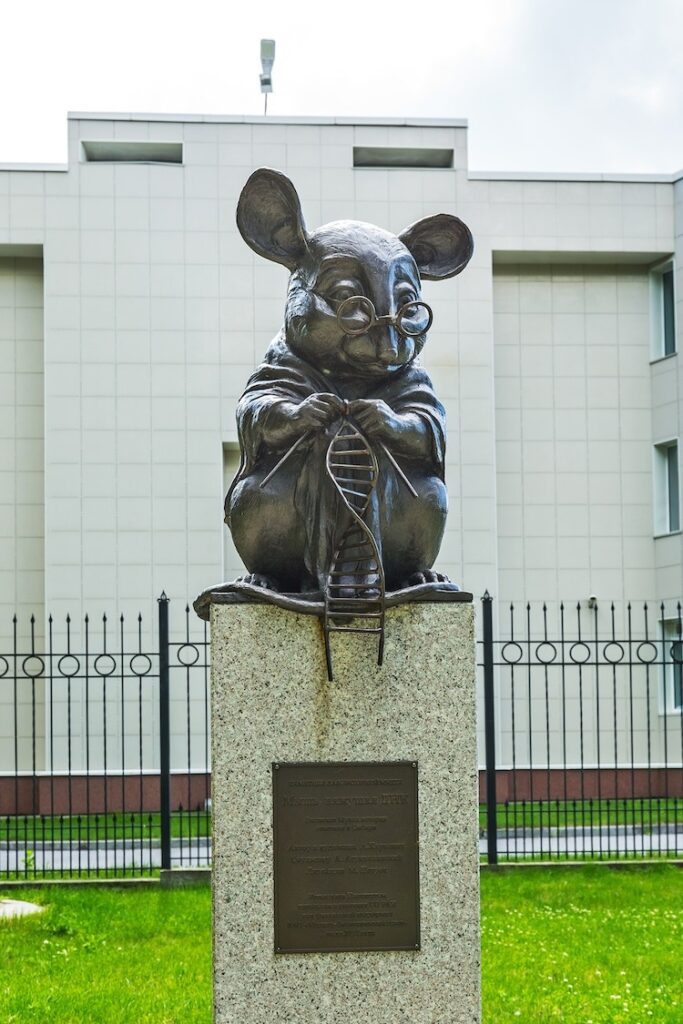
The city of Novosibirsk in southwestern Siberia is home to a unique monument that celebrates the scientific contributions of the lab mouse. Unveiled in 2013, the monument depicts an anthropomorphic mouse as an elderly woman, complete with glasses balanced atop its nose, knitting a strand of DNA from two needles. The statue stands on the grounds of the Institute of Cytology and Genetics and honors the significant role mice have played in scientific research, from studying diseases to developing medications. The institute raised funds through donations to build the statue and its surrounding park, which cost roughly $50,000 (1.7 million rubles) at the time.

Mice have been essential for biomedical researchers around the world for decades, offering a simple and fast-growing model for studies on everything from cancer to the effects of space travel. Though some scientists have raised questions about the accuracy of comparing the human body to that of a mouse, the tiny creatures remain one of the most popular animals for biomedical research. The statue was created to pay tribute to the important relationship between mice and scientists.

Sculptor Andrei Kharkevich explained that the statue combines the image of a laboratory mouse with that of a scientist, as the two are closely connected and work toward a common cause. “The mouse is imprinted at the time of scientific discovery,” Kharkevich said in an interview with Sib.fm, a Russian magazine.

The Institute of Cytology and Genetics, founded in 1957, was the first Russian Academy of Sciences arm dedicated to the study of genetics. The institute’s most notable research project involved a long-term study on animal domestication. Soviet geneticist Dmitry Belyaev led the program and carefully bred over 40 generations of wild silver foxes, documenting the physical changes each generation experienced as the animals grew increasingly friendly and playful toward humans. The experiment is ongoing, and some of the domesticated foxes are sold as sought-after pets to help fund the research.



While debates over controversial monuments have taken center stage in recent years, the statue in Novosibirsk reminds us that not all monuments need to be about politics or war. In this case, the monument celebrates the contributions of a tiny mammal that has played a significant role in scientific discoveries for decades. Who knows, maybe one day there will be a monument to the domesticated fox to join the knitting mouse.

Leave a Reply